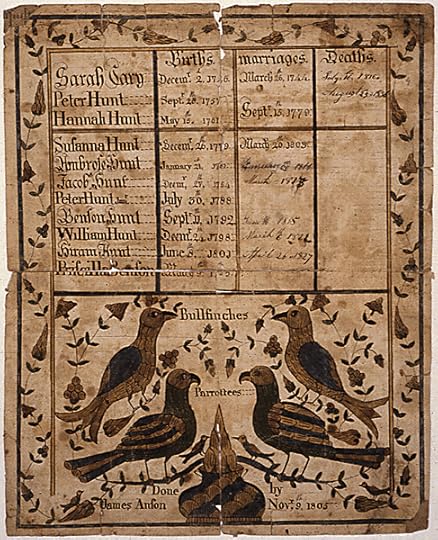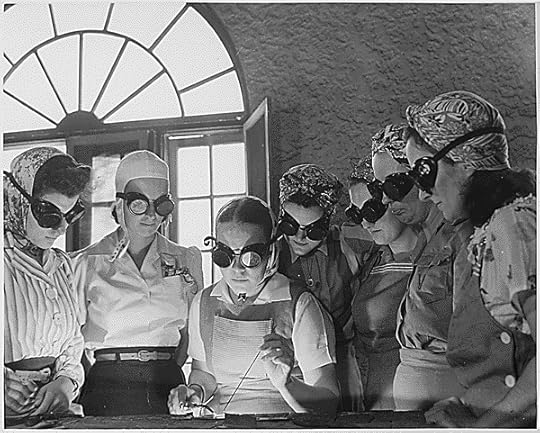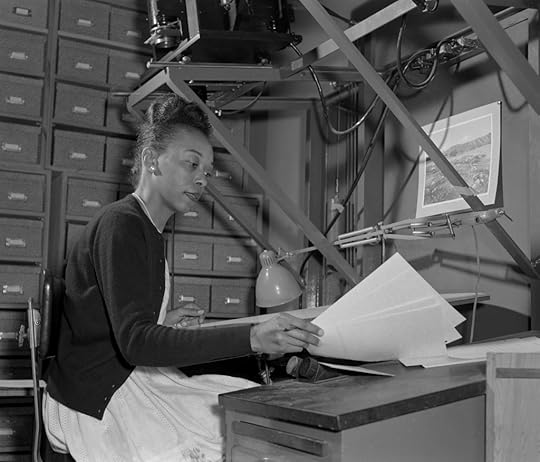David S. Ferriero's Blog, page 24
December 8, 2014
Creating a 21st Century Museum for the Mind
In a recent Wall Street Journal piece on the digital Einstein Papers Project, Walter Isaacson, waxed poetical about the “tingling inspiration of seeing original documents.” Every day I am lucky to witness that “tingling” in the Rotunda of the National Archives as visitors stand in line to be in the presence of the Charters of Freedom. On the 150th anniversary of the signing of the Emancipation Proclamation, more than 9,000 people stood in line for a weekend display of the original document. Across the country in our many facilities, ordinary citizens get to examine original records in their family history journeys, researchers use originals to track down evidence, and our government is held accountable for its action by review of the records of decisions made or not made.
Isaacson is no Luddite! He understands the value of digital access. “…my brooding soon gave way to marveling about the benefits that will come when millions of curious people, with new technologies in hand, get to dive into the papers of historical figures.” And he cites our Founders Online as an exemplar. The ability to search across the papers of six Founders, including early access to unpublished letters, has already proven to be a great boon to historical research. 
“Artwork: ‘Albert Einstein’ Artist: Elin Waite” National Archives Identifier 6343429
I, like Isaacson, “…hope that archives will remain inspiring … [ Read all ]
December 5, 2014
Thanks, Natalie
In September 2010, I blogged about a Revolutionary War spy whose descendant, Natalie Nicholson, was one of my early mentors in the MIT Libraries. When I started shelving books in the Humanities Library at MIT, Natalie was the Associate Director of Libraries. The Director’s Office suite shared the second floor of Hayden Library which gave me unprecedented access to power! I actually got to see the Administration!
Natalie took an early interest in me, stopping to ask about my studies at Northeastern University or comment on the full pre-shelving section at the end of term. We worked together for ten years—1965 to 1975—and throughout, Natalie, appointed Director in 1972, kept an eye on me. As a young librarian, she looked for opportunities for me to learn and grow. She asked me to chair my first task force—converting the MIT union catalog to microfiche. It turned into a learning experience for me with lessons in diplomacy, persistence, the power of data, marketing, return on investment, strategizing, space planning, communication, quality control, and the role of humor in defusing tense confrontations. Natalie was a great teacher and in my regular meetings with her, she offered encouragement and perspective, but never prescription. She always turned my questions into “What do you think?”
As I made each transition in my career, I would call Natalie and let her know … [ Read all ]
December 4, 2014
It’s not just a good idea, it’s the law!
On November 26, 2014, President Barack Obama signed into law Public Law No: 113-187, the Presidential and Federal Records Act Amendments of 2014. This new law modernizes records management by focusing more directly on electronic records, and complements efforts by the National Archives to implement the President’s 2011 Memorandum on Managing Government Records.
Key points of this law include:
Strengthening the Federal Records Act by expanding the definition of Federal records to clearly include electronic records. This is the first change to the definition of a Federal record since the enactment of the act in 1950.
Confirming that Federal electronic records will be transferred to the National Archives in electronic form.
Granting the Archivist of the United States final determination as to what constitutes a Federal record.
Authorizing the early transfer of permanent electronic Federal and Presidential records to the National Archives, while legal custody remains with the agency or the President.
Clarifying the responsibilities of Federal government officials when using non-government email systems.
Empowering the National Archives to safeguard original and classified records from unauthorized removal.
Codifying procedures by which former and incumbent Presidents review Presidential records for constitutional privileges.
We welcome this bipartisan effort to update the nation’s records laws for the 21st Century. H.R. 1233 could not have become law without the efforts of House Oversight and Government Reform Committee Ranking … [ Read all ]
November 25, 2014
Military Pension Files: Frakturs
Did you know that military pension files may contain valuable details about family history? While military veterans who applied for benefits had to provide evidence of service, widows or heirs had to provide evidence of their relationship to soldiers. As a result, some military pension files in the National Archives contain very interesting, and sometimes surprising items.
For example, this beautiful Fraktur illustrating a family record was found within the file documenting the military service of Peter Hunt, who served during the American Revolutionary War.
 From the Revolutionary War Pension and Bounty Land Warrant Application File of Peter Hunt.
National Archives Identifier 300092
From the Revolutionary War Pension and Bounty Land Warrant Application File of Peter Hunt.
National Archives Identifier 300092
We know from his pension application that Peter Hunt was born on Sept 28, 1757 in Dover, Dutchess County, New York. He married Hannah Benson on September 15, 1779 in Dutchess County.
On October 8, 1832, Peter Hunt made an application for pension while a resident of Kortright, Delaware County, New York, and was issued pension in 1833. According to Peter’s declaration to obtain pension, he enlisted in the United States Army in 1776 as a private commanded by Captain Childs and served in his Company of Infantry. Soon after, he enlisted into a Company of Artillery commanded by Captain Andrew Moody in a regiment of the New York Continental line.
Peter first enlisted as volunteer in the militia in 1775 … [ Read all ]

November 10, 2014
Second Open Government National Action Plan
The Open Government Partnership, launched in the summer of 2011 can trace its roots to President Obama’s challenge to the members of the United Nations General Assembly in September of 2010—a challenge to work together to make all governments more transparent, collaborative, and participatory. The Partnership has grown from eight to more than 60 nations representing more than 1,000 commitments to improve the governance of more than two billion people around the world.
The United States issued its first Open Government National Action Plan in September of 2011 and the National Archives participated in the process. In December of 2013, the White House issued the Second Open Government National Action Plan, committing to work with the public and civil society organizations to implement initiatives to increase public integrity, to manage resources more effectively, and to improve public services.
I’m pleased (and proud) to report that five of the ten action items addressing public integrity have the National Archives written all over them!
Improve Public Participation in Government. Our Citizen Archivist Dashboard activities and Federal Register 2.0 are just two experiments in increasing public engagement.
Modernize Management of Government Records. Implementation of the President’s Memorandum on Managing Government Records and the Directive on Managing Government Records are works in progress in this arena.
Modernize the Freedom of Information Act. Our Office of Government … [ Read all ]

October 24, 2014
By the Numbers
The holdings of the National Archives are vast. With more than 12 billion pages of textual records alone, it is essential that we continue to explore and employ innovative strategies to provide effective access. By understanding how you currently access our records and better understanding your unique needs, we will be better positioned to ensure your success in using the country’s records.

Analyzing our work.
From Record Group 208: Records of the Office of War Information, 1926 – 1951. National Archives Identifier: 535579
Here’s what some of our data shows:
Physical Visits:
Number of visits to all NARA facilities in FY2014: 4,163,905; up from 4,112,813 in FY13
Number of visits to our exhibits in FY2014: 3,451,044; up from 3,204,642 in FY13
Number of researcher visits to all NARA facilities in FY2014: 104,366; down from 114,096 in FY13
Number of written requests answered by all NARA offices in FY2014: 1,065,513; down from 1,132,525 in FY13
Number of written requests (includes fax, letter, email) received by all NARA archival offices in FY2014: 114,577; down from 122,442 in FY13
Number of written requests received by the St. Louis Military Personnel Records Center in FY2014: 950,936; down from 1,010,083 in FY13
Website and Online Catalog:
Traffic to Archives.gov: We had 31,093,042 visits from 22,869,469 visitors who viewed 86,729,808 pages, up 6% from FY13
Percentage of online users … [ Read all ]

October 20, 2014
Happy American Archives Month
Beverly (MA) High School is a happening place! Last week BHS graduate Angie Miller, an American Idol finalist visited. And the day after, AOTUS spent the day—the first time since June of 1963!
As I said many times during the day, it was not the same Beverly High School that I left. I was tremendously impressed with the seamless integration of technology throughout, the active participation of the students in the learning experience, and the excitement of the students hosting a visitor from Washington.

David Ferriero visits student classrooms at Beverly High School. Photo by The Salem News
I got to visit classrooms, chop onions and garlic in a culinary arts class, and speak to hundreds of students in an afternoon assembly. I wanted to make my time with them as meaningful as possible so suggested that we do some crowdsourcing of questions in advance. Lots of great questions arrived which sorted neatly into four categories: the records, the job, the institution, and personal questions.
What type of documents do you archive? Do you read all of them? What happens if you touch an historical document? What is your role in government? What are you daily duties? What is your salary? How do you keep it all organized? Is there very tight security in the archives? What do you wear to work? Have you ever … [ Read all ]

October 9, 2014
The Scan Plan: Our Strategy to Digitize the Vast Holdings of the National Archives
The National Archives’ Strategic Plan includes a simple, but audacious initiative: to digitize our analog records and make them available for online public access. We have over 12 billion pages of records, so yes, this is our moon shot.
To achieve this goal, we know we need to think in radically new ways about our processes, and we have started by creating a new digitization strategy. From the time we published our 2008 digitization strategy through today, we have scanned over 230 million objects. This is a huge number, but we have a long road ahead. Our new strategy pushes us further.

Scanning technique demonstrated by Mattie Woodford, Powell Group film scanner, taken April 1961. National Archives Identifier 7665735.
We know we cannot do all of this by ourselves. We will continue to collaborate and build on efforts with private and public organizations to digitize records, as well as branch out to citizen archivists, other federal agencies and institutions worldwide. We will develop clear processes and technologies to support a workflow from staff digitization efforts, as well as ensure that records arriving at NARA are accompanied by standardized metadata, and make them available online in a shorter period of time.
We will set measures and track progress for each of these approaches, because we believe we can make digital access happen and we … [ Read all ]

September 16, 2014
Additional Guidance on Managing Email Released
I am pleased to announce that the Office of Management and Budget and the National Archives released a memo yesterday afternoon to the heads of executive departments and independent agencies on managing email. Over the past few weeks, this issue has been brought into focus through testimony that I delivered to the House Committee on Oversight and Government Reform. In addition, we have received questions from agencies as they are reviewing our Capstone Bulletin to determine if this approach is feasible for them. This is also important in light of the requirement in the Managing Government Records Directive (OMB M-12-18) for all email to be managed electronically by December 31, 2016.
The memo reinforces the importance for each agency to manage their email properly and includes a new NARA Bulletin to assist agencies. NARA Bulletin 2014-06 reminds agency heads of existing NARA guidance and resources to assist in managing email. The memo also reminds agencies of the upcoming deadline in the Directive to develop suitable training for all agency personnel.
Our Office of the Chief Records Officer is leading our efforts to work with agencies to meet all the goals in the Directive. For more information about this work, and other initiatives they are undertaking, please visit their Records Express blog.… [ Read all ]

August 29, 2014
Happy Labor Day!
“A truly American sentiment recognizes the dignity of labor and the fact that honor lies in honest toil.” -Grover Cleveland
Public Law 53-95: An Act Making Labor Day a Legal Holiday, June 28, 1894
General Records of the U.S. Government, National Archives and Records Administration

David S. Ferriero's Blog






